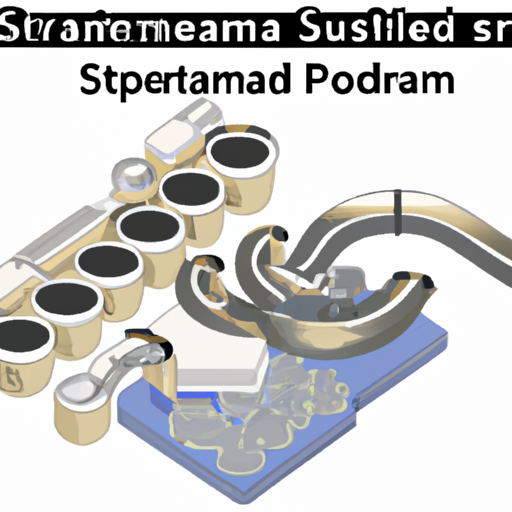Coil production is a crucial process in the manufacturing industry, as coils are used in a wide range of applications, from electrical components to automotive parts. The mainstream coil production process involves several steps, each of which is essential to ensure the quality and performance of the final product.
The first step in the coil production process is the selection of the raw materials. The most common materials used for coil production are copper and aluminum, as they have excellent electrical conductivity and are readily available. The raw materials are typically in the form of wire or strip, and they must meet certain specifications in terms of purity, conductivity, and mechanical properties.
Once the raw materials have been selected, they are fed into a coil winding machine. This machine is equipped with a spool of wire or strip, which is fed through a series of guides and tensioning devices to ensure that the coil is wound evenly and tightly. The winding machine may be manual or automated, depending on the size and complexity of the coil being produced.
As the wire or strip is fed through the winding machine, it is wound around a cylindrical or rectangular core. The core may be made of plastic, paper, or metal, depending on the application of the coil. The number of turns and the spacing between turns are critical factors that determine the electrical properties of the coil, so the winding machine must be carefully calibrated to ensure that the coil meets the required specifications.
After the coil has been wound, it is typically coated with a layer of insulation to protect it from environmental factors and prevent electrical shorts. The insulation material may be a thin layer of varnish, enamel, or tape, depending on the application of the coil. The insulation process may be done manually or using automated equipment, and it is essential to ensure that the insulation is applied evenly and without any defects.
Once the coil has been insulated, it may undergo additional processes to enhance its performance. For example, the coil may be impregnated with a resin or epoxy to improve its mechanical strength and thermal conductivity. The coil may also be subjected to heat treatment to relieve internal stresses and improve its electrical properties.
Finally, the coil is tested to ensure that it meets the required specifications. This may involve measuring its electrical resistance, inductance, and capacitance, as well as conducting high-voltage tests to ensure that the insulation is effective. Any coils that do not meet the required standards are rejected and may be reworked or scrapped.
In conclusion, the mainstream coil production process is a complex and precise operation that requires careful attention to detail at every step. By selecting the right raw materials, using advanced winding machines, applying proper insulation, and conducting thorough testing, manufacturers can produce high-quality coils that meet the demanding requirements of modern applications.
Coil production is a crucial process in the manufacturing industry, as coils are used in a wide range of applications, from electrical components to automotive parts. The mainstream coil production process involves several steps, each of which is essential to ensure the quality and performance of the final product.
The first step in the coil production process is the selection of the raw materials. The most common materials used for coil production are copper and aluminum, as they have excellent electrical conductivity and are readily available. The raw materials are typically in the form of wire or strip, and they must meet certain specifications in terms of purity, conductivity, and mechanical properties.
Once the raw materials have been selected, they are fed into a coil winding machine. This machine is equipped with a spool of wire or strip, which is fed through a series of guides and tensioning devices to ensure that the coil is wound evenly and tightly. The winding machine may be manual or automated, depending on the size and complexity of the coil being produced.
As the wire or strip is fed through the winding machine, it is wound around a cylindrical or rectangular core. The core may be made of plastic, paper, or metal, depending on the application of the coil. The number of turns and the spacing between turns are critical factors that determine the electrical properties of the coil, so the winding machine must be carefully calibrated to ensure that the coil meets the required specifications.
After the coil has been wound, it is typically coated with a layer of insulation to protect it from environmental factors and prevent electrical shorts. The insulation material may be a thin layer of varnish, enamel, or tape, depending on the application of the coil. The insulation process may be done manually or using automated equipment, and it is essential to ensure that the insulation is applied evenly and without any defects.
Once the coil has been insulated, it may undergo additional processes to enhance its performance. For example, the coil may be impregnated with a resin or epoxy to improve its mechanical strength and thermal conductivity. The coil may also be subjected to heat treatment to relieve internal stresses and improve its electrical properties.
Finally, the coil is tested to ensure that it meets the required specifications. This may involve measuring its electrical resistance, inductance, and capacitance, as well as conducting high-voltage tests to ensure that the insulation is effective. Any coils that do not meet the required standards are rejected and may be reworked or scrapped.
In conclusion, the mainstream coil production process is a complex and precise operation that requires careful attention to detail at every step. By selecting the right raw materials, using advanced winding machines, applying proper insulation, and conducting thorough testing, manufacturers can produce high-quality coils that meet the demanding requirements of modern applications.







